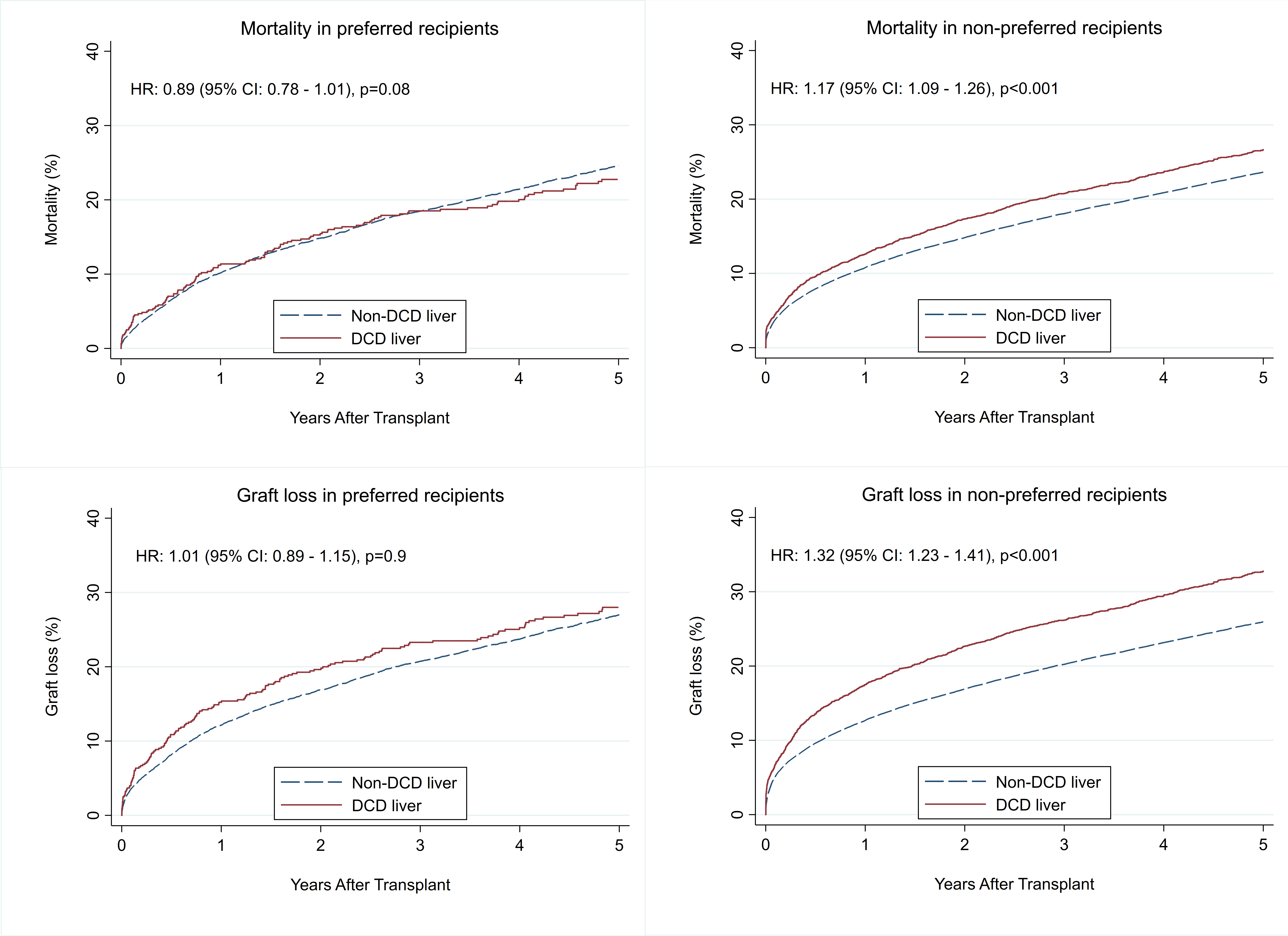Identifying Optimal Recipients for DCD Livers: Minimizing Risks of Liver Transplantation with DCD Livers by Matching to Preferred Recipients
Johns Hopkins University, Baltimore, MD
Meeting: 2020 American Transplant Congress
Abstract number: 479
Keywords: Donors, marginal, Outcome
Session Information
Session Name: Liver: Recipient Selection
Session Type: Oral Abstract Session
Date: Saturday, May 30, 2020
Session Time: 3:15pm-4:45pm
 Presentation Time: 3:39pm-3:51pm
Presentation Time: 3:39pm-3:51pm
Location: Virtual
*Purpose: Donation after cardiac death (DCD) livers represent a possible expansion to the donor pool, but are frequently discarded as they are associated with a higher risk of mortality and graft loss. We hypothesized that there are certain recipient phenotypes that would tolerate a DCD liver well, and are therefore best suited to receive these grafts.
*Methods: Using US national registry data from the SRTR between 2005-2017, we compared 4,177 recipients of DCD livers to 71,974 recipients of non-DCD livers. We identified recipient factors that amplified (or attenuated) the effect of a DCD liver on mortality and graft loss using interaction analysis. Recipients without amplifying factors (i.e. without risk factors that amplified the negative effect of a DCD liver) or with attenuating factors were classified as preferred recipients. We then used Cox regression to compare mortality and graft loss with DCD livers between preferred and non-preferred recipients.
*Results: Preferred recipients of DCD livers were determined to be recipients with a MELD < 35, with hepatitis C as their indication for transplant, and who received a DCD liver with <8 hours of cold ischemia time. 5-year patient survival with DCD vs. non-DCD livers was 77.3% vs. 75.4% for preferred recipients (p=0.1), and 5-year graft survival was 72.0% vs 73.8% (p=0.9). This translated to no increased risk of mortality (hazard ratio [HR]: 0.780.891.01, p=0.08) or graft loss (HR: 0.891.011.15, p=0.9) when using DCD livers vs. non-DCD livers for preferred recipients. In contrast, 5-year patient survival with DCD vs. non-DCD livers was 73.3% vs. 76.4% for non-preferred recipients (p<0.001), and 5-year graft survival was 67.2% vs 74.1% (p<0.001). This translated to a 17% increased risk of mortality (HR: 1.091.171.26, p<0.001) and a 32% increased risk of graft loss (HR: 1.231.321.41, p<0.001) when using DCD vs. non-DCD livers for non-preferred recipients.
*Conclusions: Preferred recipients had equivalent patient and graft survival with DCD compared to non-DCD livers. In contrast, non-preferred recipients had a significantly increased risk of mortality and graft loss with DCD livers. The risks of liver transplantation with DCD livers can be minimized by appropriate recipient matching.
To cite this abstract in AMA style:
Jackson KR, Motter J, Massie A, Garonzik-Wang J, Segev D. Identifying Optimal Recipients for DCD Livers: Minimizing Risks of Liver Transplantation with DCD Livers by Matching to Preferred Recipients [abstract]. Am J Transplant. 2020; 20 (suppl 3). https://atcmeetingabstracts.com/abstract/identifying-optimal-recipients-for-dcd-livers-minimizing-risks-of-liver-transplantation-with-dcd-livers-by-matching-to-preferred-recipients/. Accessed December 26, 2025.« Back to 2020 American Transplant Congress

